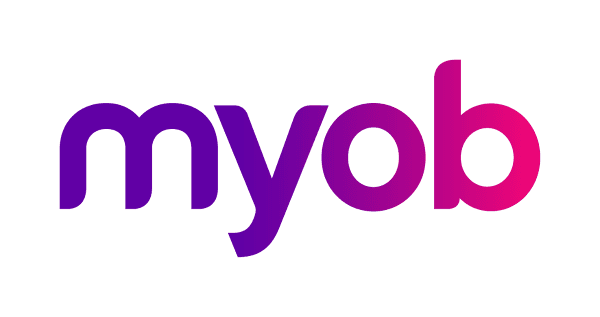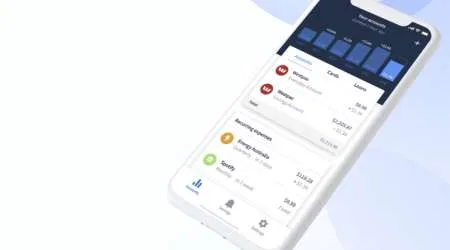How to manage your finances while running a business remotely

Are you trying to remotely run a business, but struggling to manage your finances? These tips can help.
Working from home has officially become the new normal. Over the past few weeks, thousands of businesses have been forced to close their office due to coronavirus - and the trend is tipped to continue indefinitely.
 This guide is presented by MYOB, a leading provider of online accounting and business management solutions for small and medium Australian businesses. Sign up for a free 30 day trial today. Read our review.
This guide is presented by MYOB, a leading provider of online accounting and business management solutions for small and medium Australian businesses. Sign up for a free 30 day trial today. Read our review.
According to a recent Gartner survey, over 40% of employees are likely to spend time working from home after pandemic restrictions are lifted. In other words, you need to get used to managing your workforce remotely.
With that in mind, here are some tips and tricks for small business owners, including important software tools, how to deal with signatures and the legal issues you need to know.
Get financial assistance now
If your business is struggling to stay afloat due to coronavirus, you might be eligible for various forms of financial assistance to help you operate remotely. This includes emergency business loans, the government's JobKeeper Payment subsidy, and one-off, tax-free grants of up to $25,000.
You might also want to consider switching to a business credit card with a 0% introductory interest rate. For more information on obtaining financial assistance for your business, read our in-depth stimulus package and small business loan guides.
Review operational costs
Now that everyone is working remotely, you can probably save a good chunk of money on operational costs, from commercial rent reductions to employee work expenses. Right now is a good time to review the costs associated with running a dormant office. Try to reduce the expenses you no longer need and reinvest those savings elsewhere.
Manage your employees' pay
It's crucial to establish a daily schedule with structured desk hours for remote workers. This is particularly important if your employees engage in time-billing activities or receive overtime. In addition to keeping direct wage costs down, a daily schedule will help manage work expectations and productivity levels.
Just be mindful that some employees are currently balancing their work commitments with homeschooling due to coronavirus. If you want to keep employees happy and hardworking, it pays to provide flexibility in this area (within reason.) Communication is key.
There are numerous online payroll services you can use to pay your employees remotely. Just make sure whatever accounting software you use is STP enabled. 'STP' stands for 'Single Touch Payroll' - a new, compulsory way of reporting tax and superannuation information to the Australian Taxation Office (ATO).
MYOB's Essentials and AccountRight software both come with built-in STP functionality. The process only takes a few minutes to set up.
It's worth noting that recipients of the government's JobKeeper stimulus package should be using STP-enabled payroll software which is the ATO's preferred method of reporting for the wage subsidy. (STP became mandatory for all Australian businesses in 2019.).
You can find our more information about STP here.
Manage your employees' health
Occupational health and safety (OHS) laws apply to all workers, including those who work remotely. Consequently, any injuries sustained "at home" can prove extremely costly to your business if you haven't taken reasonable steps to prevent them.
You need to ensure all employees have access to a work area that meets OHS standards. For office workers, this includes a desk setup that encourages correct posture. (The area also needs to be free of tripping hazards, electrical hazards and excessive noise levels.)
You don't necessarily need to provide the aforementioned furniture yourself. Indeed, most office items can be claimed by the employee in full as a tax-deductible item.
With that said, you do need written confirmation that your employees' work setup is safe and fit to purpose. This is usually achieved via a checklist/questionnaire and signature from the employee. If you want to be absolutely sure, you can also perform a home workplace safety inspection to ensure it's up to code.
Naturally, the mental health of remote workers is also an important consideration. You should schedule regular check-ins with staff via video conferencing tools like Zoom or Google Hangouts. Depending on the size of your workforce, this could be daily, weekly or even monthly.
The key is to keep each staff member feeling valued, connected and informed via one-on-one meetings. As employees adjust to working remotely, this will also help ensure that any kinks are ironed out early.
Read out guide to the best video conferencing software in Australia.
Do you need insurance?
You need to make sure you have an adequate level of insurance for any injuries sustained by an employee while working from home (see above). These are the main things to consider.
Unfortunately, any business equipment used by remote workers probably won't be covered by their home insurance (especially if they don't have any.) This means you will need to pay for a replacement in the event of accidental damage, loss or theft.
Manage online payments
There are multiple ways to manage payments while working remotely. For example, you could set up an online seller account (if selling internationally), or choose a merchant service that specialises in small businesses. In the current climate, you will definitely need an e-commerce platforms which will allow you to trade purely online.
Compare different merchant services.
For businesses that rely on invoicing, enabling your customers to make payments online will help you get paid faster. For example, MYOB's Essentials package includes an inbuilt invoice tool that allows customers to pay via AMEX, Visa, MasterCard or BPAY. It also offers an Invoicing App to create invoices and quotes from your phone, with all data syncing seamlessly.
Use free or discounted software
A lot of business software provides free membership options, albeit with limited functionality. For example, the free version of Zoom caps meetings at 45 minutes while the paid version has an unlimited duration.
If you're looking to keep operational costs down, it's definitely worth comparing the free and paid versions to see if you can live without the missing features. (In any event, it's a good way to trial business products before committing to a full membership.)
Here at Finder, we use a range of free and low-cost business products that are specifically designed for remote workplaces. This includes Zoom (for video conferencing), G Suite (for emails, spreadsheets and work processing), Slack (for internal messaging), and Jira (for project management.)
It's also possible to score significant discounts on leading business products by being in the right place at the right time. For example, you can currently get 50% off MYOB Essentials plans for the first three months. This works out to as little as $5 per month.
Electronic signatures
If you're still using "wet" signatures to sign business documents, it's nigh time you evolved to the digital era.
An electronic signature (or 'e-signature' for short) is an alternative way to formally and legally sign documents. It provides the same legal standing as a handwritten signature, as outlined in Section 10 of the Australian Electronic Transaction Act (1999). This is the quickest way to get formal documents signed and is particularly useful for remote workers.
Claim your Internet and mobile phone bills
If you're running a business remotely, don't forget you can claim various deductions on your taxes. This includes home office running expenses (such as heating, cooling, lighting and cleaning), phone expenses and internet expenses. However, you need to keep records to show how you calculated your claims.
According to the ATO, you need to keep the following phone and Internet expense records:
- keep all your phone and internet bills for the year
- show how much is related to work
Highlight all your work-related calls in a representative four-week period which can then be applied to the full period.
Unless you only use your phone and internet for work, you will have to determine the work-related portion of your expenses. Keep a record of the calculation and only claim that amount.
If you have a bundled plan, you can keep a diary covering a representative four-week period showing how often you use each service for work. This pattern of work use can then be applied to the full working period.
To determine your work use, you can record your:
- internet use – as the time you spent, or data used for work purposes compared to your private usage and that of all members of your household
- phone use – the number of work calls made as a percentage of total calls or the amount of time spent on work calls as a percentage of your total calls.
If your usual pattern of work use changes during the year, you may need to complete a new record. For example, if you change job and the work use of your internet changes you need to complete a new diary.
Read our in-depth guide for more information.





